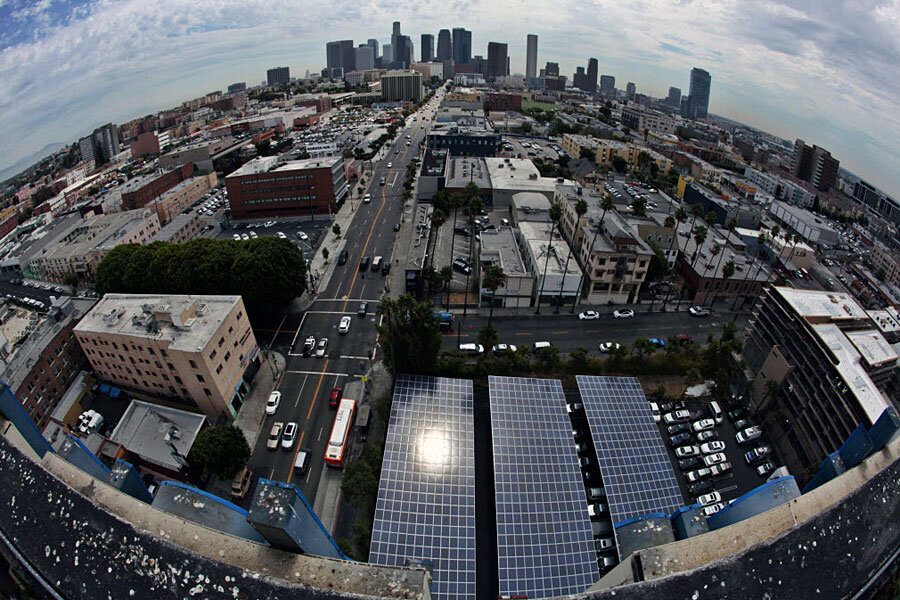Solar parking lots sound like a great idea. Why aren’t they catching on?
Loading...
Of the total surface area in a typical city, 35 to 50 percent is pavement, according to research conducted by the Lawrence Berkeley National Laboratory. Of the total pavement, about 50 percent is parking lots and 40 percent is exposed parking lots.
Researcher Haley Gilbert at the Lawrence Berkeley Laboratory said that these percentages result in an environmentally damaging cycle of heat energy.
“It’s amazing how hot these pavements get and how we’ve let them cover most of our urban surfaces, because dark pavements absorb almost all of the sun’s energy, the pavement surface heats up, which in turn also warms the local air and aggravates urban heat islands.”
But there is a solution: covering parking lots with solar panel roofs. Such technology would reflect heat from the sun and use the sun’s energy to power buildings and electric cars. Therefore the pavement would absorb less heat, causing the air to cool down.
“Carports reclaim empty space that we just use for putting our car in,” said Panos Bitarchas, CEO of Solarcube to Solar Power Portal. “With carports we think we have a multipurpose product that can cover our cars, generate renewable electricity and can change the view of a grey, empty space into a nice architectural function. It’s a completely different approach but we feel that car parks can be used to generate electricity locally for heavy users.”
On an individual basis people would save on fuel costs, particularly in the summer, because their cars would be protected from the sun’s rays and they would not have to spend energy on cooling their cars down.
Apart from the direct environmental effect, solar carports are having, they also have inspired individuals to change their behavior to be more environmentally conscious.
The sporting goods store REI built a solar carport at its Framingham, Mass. location, a first for the company, back in 2012. Nancy Norenberg, the store manager, said that the company’s new initiative had inspired employees to turn lights off and rely on natural light from the windows when they could, according to The MetroWest Daily News.
It would solve several environmental problems at once with relatively little inconvenience and a high payback. So why aren’t solar carports in every mall in America? The cost.
“It’s the most expensive type of system to build,” Chase Weir of TruSolar which rates solar projects based on financial riskiness, told The Washington Post. “A lot more engineering, a whole lot more steel, more labor, and therefore, it’s a relatively small percentage [of solar power].”
Another factor preventing further growth is that it is only economically practical in specific states, states which have incentives in place to support renewable energy.
“Because carport projects are more expensive, they have a generally higher reliance on state level incentives,” Scott Moskowitz, a solar analyst with GTM Research told the Washington Post. “So the markets in which those exist, there is going to be a higher concentration of carports.”
For now, solar carports are mostly popular with big companies and stadiums – such as Dow Jones & Co., Staples and the Washington Redskins’ FedEx Field – in states that support renewable energy.
While solar carports are currently not financially feasible for most cities and business, there is hope that they will become more affordable in the future.
“The cost to install a solar canopy today is less than the cost to install a rooftop just a few years ago,” said Weir.








